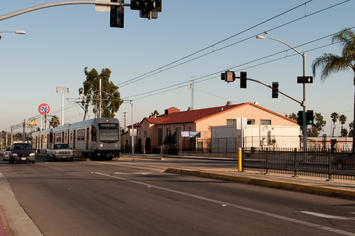
In this miserable COVID-19 spring, it’s tempting for remote workers to vent our frustrations with being hemmed in, forced to stare at screens while unable to do much else other than walk around the block or go to Costco. Yet the pain felt by the teleworking middle class is dwarfed by that of working-class Americans.
Outside of nursing homes, the coronavirus has hit poor communities hardest, a problem tied to living and working in close proximity with the public. Unlike the affluent of Gotham, some 30 percent or more of whom, in certain neighborhoods, were able to leave town and work remotely, few people in poor communities have fallback options. They remain where they are, riding public transit and enduring crowded conditions. The far poorer Bronx has suffered nearly twice as many deaths from Covid-19 as more prosperous, but even denser Manhattan.
Public-transit use appears to be a significant factor in infection, not only in New York but also in car-dominated cities like Detroit, Houston, and Los Angeles, where the poor constitute a disproportionate share of riders. Living conditions for poorer populations represent another factor, according to a recent study by the Furman Institute at New York University. In working-class communities, many residents share homes or apartments with extended family. It’s difficult, if not impossible, to socially distance or quarantine when you live in a confined space containing multiple adults. This is particularly true in Los Angeles County, home to five of the ten most crowded zip codes—including the most crowded—in the U.S. Living in multigenerational homes may be one reason why the poor in areas like South Central Los Angeles or East L.A., according to an L.A. County survey, have suffered virus death rates twice those of better-off precincts.
Much the same pattern can be seen in Houston, where poor, often immigrant families in areas like the First or Third Wards have experienced far higher rates of infection and fatalities. An analysis by the Houston Chronicle revealed that seven of the ten zip codes with the highest rates of infection were majority black and low-income communities. Some had double or triple the average per-capita rate in the county.
Over time, the biggest impact of the pandemic, will likely be economic. Income and capital could dry up, undermining cash-strapped entrepreneurs and chipping away at the nonprofit safety belt that helps poor communities endure harsh times. The wage gains made during the first two years of the Trump administration among low-income workers could well evaporate. Almost 40 percent of Americans making less than $40,000 a year have lost their jobs during the pandemic. It’s not clear yet how many of those positions will be regained as the economy reopens.
To a large extent, the public sector and those parts of the economy that operate by keystroke—knowledge workers in fields like media, finance, software, and accounting— have faced inconvenience but not the threat of obliteration. Salaried workers have been laid off at roughly half the rate of hourly workers. The unemployment rate of those with less than a high school diploma jumped from 6.8 percent to 21.2 percent; for college graduates, it rose from 2.5 percent to 8.4 percent. The biggest drops in hiring have been concentrated in recreation and travel, mostly “personal contact” jobs that employ many poor workers. Employment in this sector has dropped 70 percent, while remaining stable in such fields as computer networking, as well as throughout the entire public sector.
Hiring has taken place at Amazon warehouses, food-delivery systems, and other “essential” businesses, but many workers in the inner cities were employed in restaurants, hair salons, and across the vast hospitality sector as hotel chambermaids, ticket sellers, shuttle-bus drivers, and car-rental agents. These enterprises have been devastated. In Southern California, the largest job losses have been in food preparation and personal care, both major sources of employment for minorities and immigrants. “There’s a general paranoia and people here are struggling,” observed Rudy Espinoza, executive director of the Leadership for Urban Renewal Network in East L.A. “Here, this is not about convenience—it’s about putting food on the table or paying the rent.”
Read the rest of this piece at City Journal.
Charles Blain (@cjblain10) is the president of Urban Reform and Urban Reform Institute. A native of New Jersey, he is based in Houston and writes on municipal finance and other urban issues. Joel Kotkin (@joelkotkin) is the Presidential Fellow in Urban Futures at Chapman University and executive director of the Urban Reform Institute. His new book is The Coming of Neo-Feudalism.
Photo credit: InSapphoWeTrust via Flickr under CC 2.0 License.












